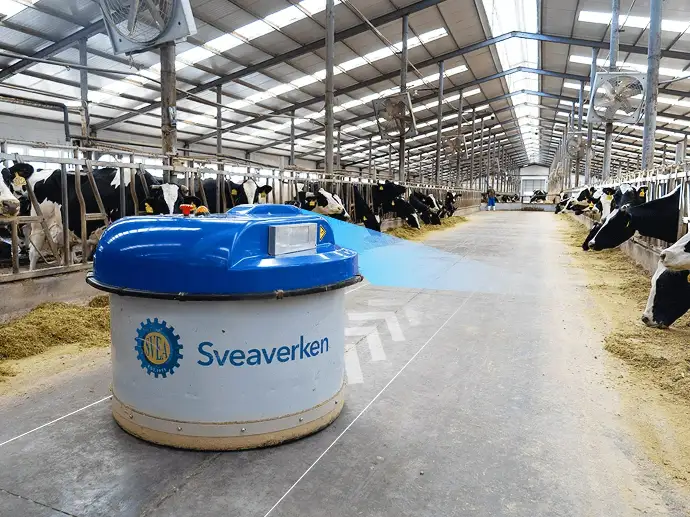With the rise of autonomous vehicles, light aircraft, and mobile robots, visual navigation technology has become increasingly popular in recent years. By enabling these machines to navigate through their environment accurately and efficiently, visual navigation technology is transforming the way we feed livestock through automatic feeding systems. In this article, we will explore what visual navigation technology is, how it works in automatic feeding systems, and the benefits it brings to application scenarios.
What is visual navigation?
Visual navigation technology refers to the use of cameras and image recognition software to guide autonomous machines through their environment. This technology allows robotics to navigate autonomously by recognizing landmarks and obstacles in their surroundings. Visual servoing is a technique used in visual navigation that involves using feedback from a camera to control the movement of the machine.
The role of visual navigation technology in automatic feeding systems
Visual navigation is a subset of autonomous navigation that uses image recognition to provide robots with the ability to navigate and map their environment. This technology enables robot navigation to move autonomously and safely, which is essential in environments where there are a lot of obstacles.
One of the applications of visual navigation technology is automatic feeding systems for livestock. Autonomous mobile robots equipped with visual navigation technology can move around a barn or feeding area, locate feed silos, and deliver feed to the animals. It saves time and labor costs from manual pushing and provides consistent and accurate feeding for the animals.
Visual navigation technology can help automatic feeding systems navigate around obstacles and locate feeding stations. This is important because the ability to locate feeding stations quickly and efficiently is essential to the smooth operation of an automatic feeding system. Visual navigation technology can help robots move around obstacles that may be present in the environment, such as people, animals, or other objects. It can also help robots navigate through areas that are difficult to access, such as narrow passages or areas with low light.
Benefits of vision based navigation
There are several benefits to using visual navigation technology in automatic feeding systems. One major benefit is increased efficiency. By achieving automatically distributing or pushing the feed process, farmers can save time and reduce labor costs. Additionally, because these robots are able to navigate autonomously using visual-navigation techniques such as visual servoing, they can distribute feed more accurately than humans. This technology also enhances the well-being of animals. By ensuring that each animal receives an appropriate feed intake at regular intervals, farmers can prevent over or under feeding, which might lead to health problems.
Examples of vision guidance feed pushing
Among the companies that apply visual navigation technology to their products, Sveaverken has successfully developed the world's first visual navigation feed pushing robot - RoboPusher Pro. This pusher robot relies on computer vision technology to control the direction of travel, pushing frequency and range, and adjusting its moving route in the alley by image recognition and advanced algorithms.

(Sveaverken RoboPusher Pro at a barn)
Visual navigation system makes the robot move more flexibly. You don't need to employ magnetic nails in the cowshed or do any modifications to it. As long as the road surface is relatively smooth and free of fixed obstacles, the robot enables arbitrary path planning and runtime control. After completing the pushing task, it returns to the position of the charging pile to charge automatically along the pre-deployed patrol path.
It is remotely controlled through the WEB end page (compatible with computers, tablets, and phones), allowing you to manage feed pushing anytime, anywhere. Thus, automatic feeding robots on farms create an unmanned feeding environment, save labor costs, and increase the feed intake of cattle, thereby increasing the milk production of dairy cows or meat production of beef cattle, so as to maximize the benefits of pasture.
In conclusion, the use of visual navigation technology in automatic feeding systems has many benefits including increased efficiency and improved animal welfare. As modern navigation systems continue to evolve and improve, we can expect this trend toward automation on farms to continue. Overall, visual navigation technology is an essential component of modern automatic feeding systems for livestock. By leveraging the power of advanced machine learning algorithms and sensor technologies, these systems can improve the efficiency and sustainability of livestock farming, providing benefits for farmers, consumers, and the environment alike.
If you want to know more about Sveaverken RoboPusher Pro, please feel free to contact our sales team. We are here to answer your questions timely and hope to help you realize digital farm management.
Related articles:
Feeding Robot Boosts Milk Yield 0.8kg/cow/day
RoboPusher Pro Contributed to Sunlon Smart Farming Management